Key Takeaways: Paris-Roubaix 2025
Breaking down Sunday's epic battle between Mathieu van der Poel and Tadej Pogačar on the brutal cobblestones of northern France
Across the cobblestone-strewn fields of northern France, Mathieu van der Poel used a hard pace and successive searing attacks from extremely far from the finish line to whittle down and ultimately leave behind an elite front group to win his third consecutive edition of Paris-Roubaix. The race, which produced a dramatic showdown between two of the sport’s all-time greats, Van der Poel and Tadej Pogačar, was ultimately decided when Pogačar overcooked a corner on a cobbled sector and ended up in a roadside ditch. Despite a valiant chase, Pogačar—making his Roubaix debut—had to settle for a still-fantastic second, while Mads Pedersen, who lost contact with the lead group after an ill-timed flat, won the sprint from the chase group to secure third, creating an all-World Champion podium.
Paris-Roubaix 2025 Top Ten
1) Mathieu van der Poel (Alpecin-Deceuninck) +0
2) Tadej Pogačar (UAE Team Emirates-XRG) +1’18
3) Mads Pedersen (Lidl-Trek) +2’11
4) Wout van Aert (Visma-Lease a Bike) +2’11
5) Florian Vermeersch (UAE Team Emirates-XRG) +2’11
6) Jonas Rutsch (Intermarché-Wanty) +3’46
7) Stefan Bissegger (Decathlon AG2R La Mondiale) +3’46
8) Markus Hoelgaard (Uno-X Mobility) +3’46
9) Fred Wright (Bahrain-Victorious) +4’35
10) Laurenz Rex (Intermarché-Wanty) +4’36
Check out the defining points of the race, and my five key takeaways (expanded from my initial post-race thoughts) below:
BTP’s Spring Classics Coverage is brought to you by JOIN Cycling
The JOIN Cycling App is a smart training platform that adapts to your schedule, goals, and fitness level, offering dynamic, science-backed workouts. It’s perfect for cyclists of all levels, balancing training and recovery efficiently. With AI-driven adjustments and flexibility, JOIN helps you stay motivated and improve consistently. Redeem a free month through our special BTP link.
Race Notebook
BTP is seamlessly following every twist and turn of the 2025 Classics Season with the fantastic Tour Tracker app (iPhone/Android/Web)
160.1km: By the time the peloton heads into the first cobbled sector, the favorites are already at the front and breaking things up. With Filippo Ganna suffering an ill-timed flat, Ineos, who had been driving the pace, has sat up, with Mathieu van der Poel’s Alpecin team taking over. Impressively, despite a lack of team support, Pogačar is sitting directly at the front, looking easy over the cobblestones, with the rest of the eventual podium, Van der Poel and Mads Pedersen, close behind. Wout van Aert, who was struggling to stay near the front, has been caught up in a crash and is chasing extremely far behind.
94.6km: When the peloton hits the brutal Trouée d'Arenberg cobbled sector, Tadej Pogačar is on the front pressing the pace, with Mads Pedersen on his wheel. Behind, Van Aert has caught up and worked his way into third, but he is pushed off the wheel by Van der Poel and is quickly shuffled back through the field after being unable, or unwilling, to hold his place.
93.6km: Van der Poel has taken over at the front, increasing the pace, and causing splits that have created an elite front group. Just a kilometer into the sector, the race has been decanted to the point that the three strongest riders, and eventual podium, are already sitting in the first three positions.
92.6km: Even when they exit the sector, Van der Poel keeps pressing the pace, eager to keep the distanced riders in arrears by causing an early selection.
87.3km: With Pogačar isolated and on the front (appearing to call for pickle juice, likely to stave off cramps), Van der Poel begins launching a series of high-speed attacks, which forces Pogačar to respond. With sustained attack speeds in the 60 km/hrs (37mph) on the flats, Van der Poel is able to leverage his major advantage on the flat course, his superior raw power with an FTP close to 500 watts, by levying a series of body blows on Pogačar, who, at roughly 13 kilograms lighter, has to go incredibly deep to match this flatland power.
70.6km: With the group whittled down to just four riders, Pogačar, Van der Poel, Stefan Bissegger, and Jasper Philipsen, Pogačar gets to work on a tough cobbled sector, attacking and opening up a massive gap. However, behind, Van der Poel doesn’t seem particularly bothered, and easily closes it down, while his teammate Philipsen jumps across later.
45.7km: This theoretically puts Pogačar in a tough position, since he is outnumbered 2v1 and Philipsen is an elite sprinter. But Van der Poel has no interest in contesting a sprint with the hard-chasing Pedersen/Van Aert/Vermeersch chase group, and his high pace on the cobblestones eventually distanced Philipsen, who is dropped for good when Pogačar lifts the pace near the end of a hard cobbled sector.
38.1km: Shortly after, with Pogačar leading into a tight cobbled corner (and possibly trusting the moto, which crashes in the corner, too much), Van der Poel lifts off the pace just enough to successfully complete the turn, while Pogačar goes into the mud/grass before tumbling to the ground.
33km: Pogačar gets back on his bike and is within 12 seconds of Van der Poel, but, with the leader holding speeds above 50km/hr (32mph), it is nearly impossible to ride fast enough to close him down. The lead is now large enough that when Van der Poel avoids crashing when hit with a water bottle thrown by a potential saboteur, any hope of a Pogačar win is essentially ended.
15.8km: With Van der Poel’s steady, hard pace pushing the gap to 30 seconds, Pogačar is forced to pull over and change bikes due to a mechanical issue, and the gap grows to over a minute. Combined with Van der Poel powering over the cobbles while Pogačar begins to fade, the gap is large enough to allow Van der Poel to suffer a flat and change bikes on the Carrefour de l'Arbre, one of the toughest sectors in the race, without losing a fatal amount of time.
Finish: Van der Poel easily holds his gap to over a minute to the chasing Pogačar, who was fighting to hold off the chasing group, which is led in by Mads Pedersen, who beats Wout van Aert and Florian Vermeersch with an impressively strong sprint finish that suggested he could have contested the win without his ill-timed flat tire.
Five Key Takeaways
The first three takeaways are a slightly edited version of my initial post-race thoughts sent to premium subscribers directly after the race on Sunday
1) Mathieu van der Poel’s Winning Strategy Is All About Reducing Variables Before the Finale: The 30-year-old superstar cemented his status as the best Roubaix contender of all-time by winning his third career Roubaix title (becoming the first rider to do so since Francesco Moser in 1978-1980 to win three in a row) in just his first five starts. And, riding as if he and Tadej Pogačar were locked in some sort of personal wager to see who can rack up as many Monument wins in as little time as possible, Van der Poel took his third straight Roubaix win and his 8th career Monument, which saw him once again tie Pogačar for the most Monument wins amongst current riders, and moved him up into 6th place of all-time.
While Van der Poel’s historic win can be partially chalked up to his incredible strength and technical prowess over the cobblestones, one of the biggest reasons he has been able to amass this staggering number of Roubaix victories is, just like Pogačar, his willingness to press the issue from so far out that any lesser competition is taken out of the equation, leaving fewer obstacles between him and the victory.
Essentially, Van der Poel has made the simple calculation that by decreasing variables, he puts himself in a position where he can isolate his rivals and only has to defeat a handful of riders on the same supernova form (in today’s case, Mads Pedersen and Pogačar) instead of dealing with the dynamics of a 10-15 rider front group.
Witnessing past stars like Peter Sagan continually caught up and defeated by these dynamics in one-day finales has likely influenced this decision (not to mention his own issues early on in his career), and is why Van der Poel is so eager to aggressively attack the front group through the 20 kilometers following the Arenberg sector.
Of course, this aggressive style of riding does leave him vulnerable, but it means in order to be defeated, a rider has to be both strong enough and able to take advantage of any mistake he makes. This is the reason why Van der Poel has essentially only lost to one rider, Pogačar, over the last three years, in one-day races.
It is also the reason why he is the only rider to ever win back-to-back editions of Roubaix with gaps of more than a minute.
2) Tadej Pogačar’s Second Place Still Ranks as One of the Sport’s Rare Feats: The 26-year-old superstar failed in his mission to check off the one-day win he is least physically suited for after crashing and losing contact with Van der Poel with 38 kilometers remaining. Closing the 20-second gap on Van der Poel would always be difficult, but a broken rim and subsequent bike change ruled it out, even after Van der Poel was forced to stop to change his own machine following a flat.
However, even before his crash (which was at least partially due to fatigue and course inexperience), the path to victory seemed increasingly slim for Pogačar, since it wasn’t clear how he was going to distance Van der Poel, who held both a technical and raw power advantage on the flat, cobbled terrain, or outsprint him in the velodrome.
If anything, Pogačar looked like the one hanging on for dear life when Van der Poel lifted the pace, and his significant fading in the final few cobblestone sectors likely showed us that even if he had a clean run without flats or crashes, it would have been difficult to hold Van der Poel’s wheel when he really turned the screws on the Carrefour de l'Arbre.
But, even if his second place is disappointing for Pogačar personally, in the macro sense, it is still a staggering feat for a Tour de France favorite, especially when we consider how relaxed he appeared and well-positioned he placed himself through the early sections of the race, when even experienced Classics riders were using their entire teams to move them through the field or struggling to hold position in the group.
With his podium finish, he becomes only one of a handful of riders throughout history to contest both Paris-Roubaix and the Tour de France in the same season, and the only one to ever get this close to winning it in his debut.
The closest comparison I could find was Greg LeMond, in his first career start, finished in 4th place in 1985 before finishing second place at the Tour
Other Tour contenders, like Eddy Merckx and Bernard Hinault, won Roubaix and the Tour in the same season, but never in their debut Roubaix.
3) Cycling’s Middle Class Is Being Squeezed Out of Existence: After today, it is more clear than ever that the sport of cycling is currently stuck in a binary mode where Mathieu van der Poel wins the ‘flatter’ races and Tadej Pogačar wins the ‘hillier’ ones, while the rest are forced to fight for scraps.
For example, the last seven Monuments have been won by one of the two riders, and, in the last 10 WorldTour one-day races where they have both finished, seven of them have been won by one of Pogačar or Van der Poel.
In one of the three races where neither won, 2023 Milan-Sanremo, Van der Poel was working for his teammate Jasper Philipsen, with the other two won by Wout van Aert (2023 E3) and the other due to an incredible Matej Mohorič’s solo breakaway (2022 Milan-Sanremo).
Highlighting just how dominant these two have been, through Pogačar’s last eight Monument finishes, he hasn’t finished off the podium, and has five wins, one runner-up, and two third-place finishes.
Tadej Pogačar Record Through Last Eight Monuments:
5 Wins: 2xFlanders, 2xLombardia, 1xLiège
1 Runner-up: 1xParis-Roubaix
2 Thirds: 2xMilan-SanremoMilan-Sanremo: 3rd, 3rd
Tour of Flanders: 1st, 1st
Paris-Roubaix: 2nd
Liège–Bastogne–Liège: 1st
Il Lombardia: 1st, 1st
This run is at a Merckian level, but Van der Poel’s current Monument run is right there with both all-time greats (Merckx and Pogačar):
Mathieu van der Poel Record Through Last Eight Monuments:
5 Wins: 3xParis-Roubaix, 1xFlanders, 1xMilan-Sanmremo
2 Thirds: 1xFlanders, 1xLiègeMilan-Sanremo: 10th, 1st
Tour of Flanders: 1st, 3rd
Paris-Roubaix: 1st, 1st, 1st
Liège–Bastogne–Liège: 3rd
4) The Extremely High Level of the Top Two Has Left Wout van Aert No Room for Error: This dominance has come at the expense of the rest of the peloton, which has been squeezed to the point that today’s podium was composed entirely of current or ex-World Champions (Pogačar, Van der Poel, and Pedersen).
And, early positioning issues aside, Wout van Aert rode a very strong race for the second week in a row, yet missed out on the podium yet again, meaning the top four positions today and last week at Flanders comprised the exact same riders.
Every member of the final podium was so strong that it is difficult to imagine how Van Aert could have improved his position, but, seeing him struggling so much with positioning before the Arenberg sector, made it clear that post his recent crashes, he simply does not have the same confidence and appetite for the physical contact that his top rivals do, which is needed to stay at the front.
The irony is that by being shuffled further back, Van Aert is placing himself in a far more dangerous position in the group and increasing the chances of crashing.
5) All-Out All-Day Racing is Fundamentally Changing the Profiles of Winning Riders: One of the main reasons opportunities for lesser riders to sneak into the mix by dragging the favorites down into tactical battles have been eliminated is the increased intensity with which these major one-day races are being raced.
For example, while the Arenberg forest used to create the race’s initial separation, the pace is now so high so early in the race, that by the time they hit the Arenberg today, the peloton’s legs were sapped and the top favorites were able to essentially seal the top five in a few kilometers after leaving the infamous cobbled sector.
Illustrating just how hard these races are now being raced flat-out from start to finish, today’s edition, the second-fastest of all-time, took nearly 40 minutes less than the 2014 edition, with the four fastest editions of the race all occurring since 2022.







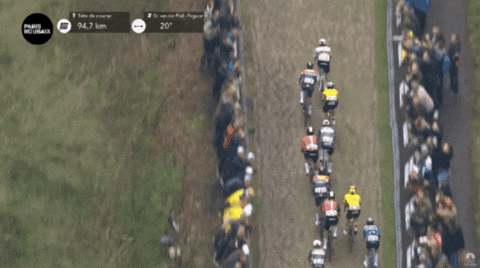



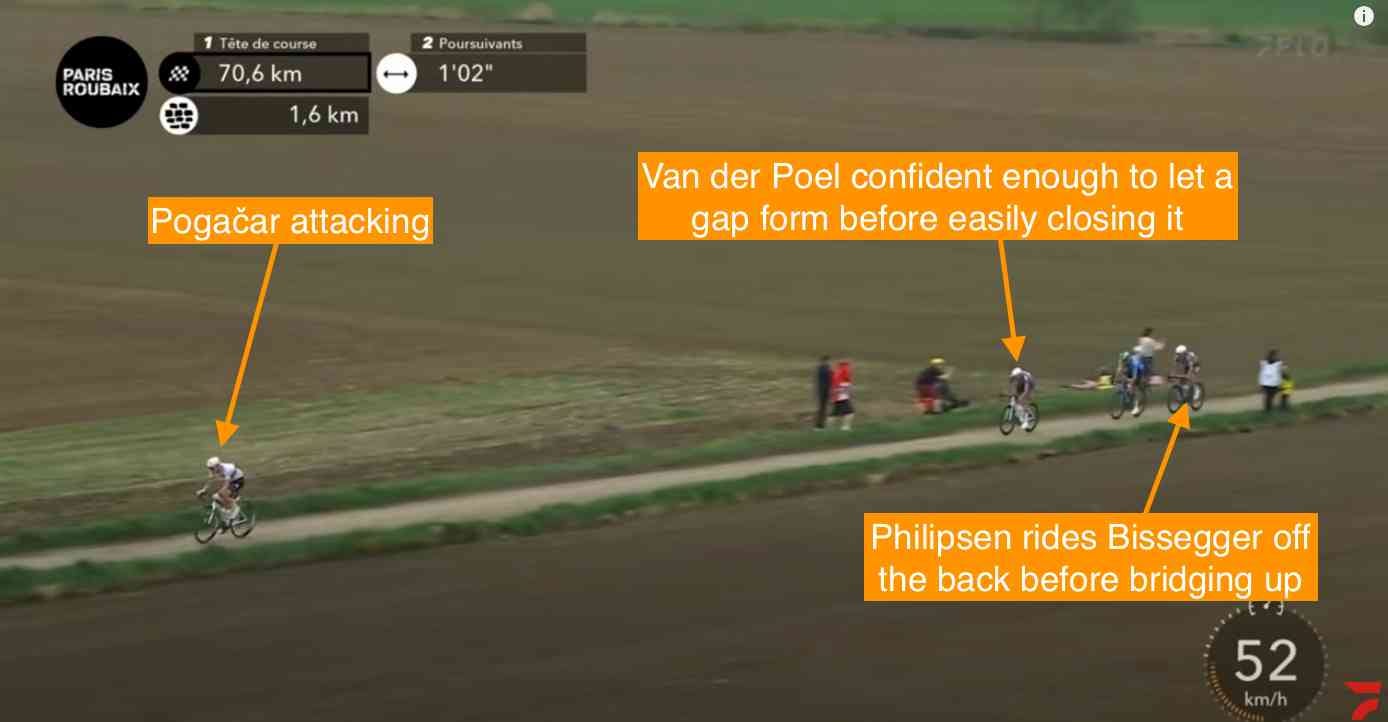
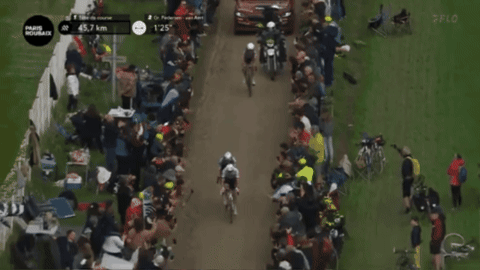
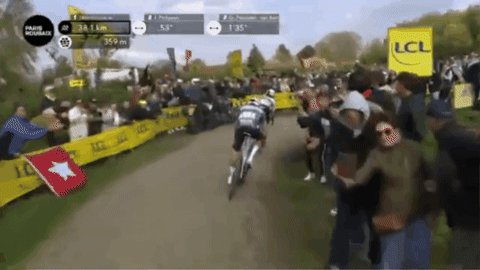
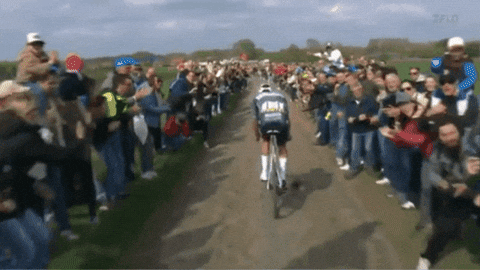
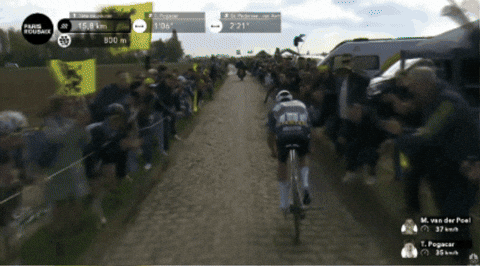
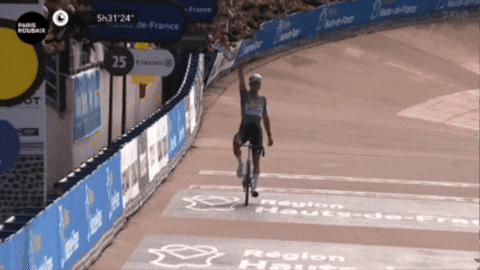
What a race. MVDP showing power and the wisdom of a veteran. As you said, Pogacar finishing second is quite a feat. I’m glad I could appreciate it without having to be annoyed that he wins absolutely everything
Great reporting, thank you!